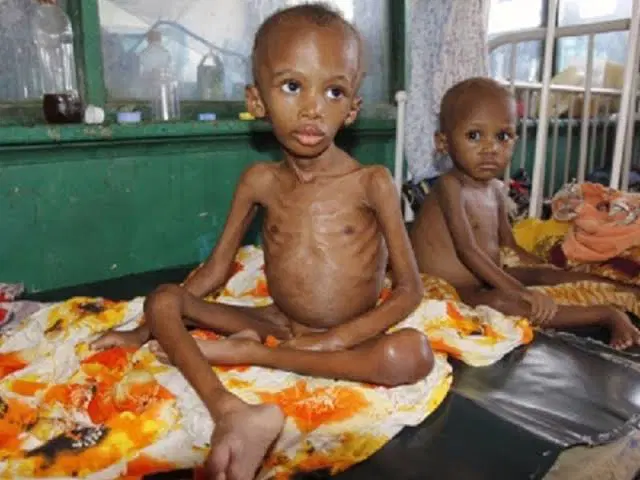On August 29, 2025, Mohamed Malick Fall, the UN Resident and Humanitarian Coordinator in Nigeria, issued a dire warning about the country’s worsening malnutrition and food insecurity crisis, spotlighting the plight of children like two-year-old Musa, who is battling severe acute malnutrition (SAM) at a therapeutic feeding center in Katsina (Web:0). The March 2025 Cadre Harmonisé survey estimates 31 million Nigerians across 26 states and the FCT face acute food insecurity, potentially reaching 40 million nationwide, surpassing many countries’ populations (Web:6, Web:22). Nigeria bears Africa’s highest malnutrition burden, with 15 million children under 5 affected, including 3.5 million at risk of SAM, particularly in Borno, Adamawa, Yobe, Sokoto, Zamfara, and Katsina, where 2.5 million children are vulnerable (Web:6, Web:9, Web:15). Southern states like Delta, Rivers, Akwa Ibom, Oyo, and Osun are also reporting rising cases, signaling a national emergency (Web:0).
Humanitarian systems are at a breaking point, with overcrowded facilities forcing children to share beds and increasing mortality risks, as 420,000 children under 5 face death by year-end without intervention (Web:0, Web:11, Web:13). The crisis is compounded by funding shortfalls, with the World Food Programme’s food pipeline set to collapse by early September 2025 and UNICEF’s therapeutic supplies projected to run out by month’s end (Web:0, Web:11). Malnutrition is also affecting adults, particularly displaced women, with a July 2025 MSF screening in Katsina revealing 13% of 750 mothers with SAM (Web:11, Web:16).
Proposed Solutions: Fall urged immediate funding from the Nigerian government, international partners, and the private sector to sustain life-saving interventions like ready-to-use therapeutic food (RUTF) and scale up treatment facilities (Web:0, Web:13). Long-term investments in resilient, locally led solutions, such as community-based nutrition programs and local food production (e.g., Tom Brown supplements), are critical (Web:1, Web:9). The Nigerian Red Cross and MSF have scaled efforts, treating nearly 100,000 children in the Northwest in 2025, but only 20% of SAM cases receive treatment due to resource constraints (Web:1, Web:13). Enhancing security to allow farmers access to land and improving health systems to address low vaccine coverage and sanitation are also vital (Web:6, Web:9).
Funding Needs: An estimated $1.2 billion is needed annually to address SAM in Nigeria, with $300 million urgently required by October 2025 to prevent 2,000 child deaths during the lean season (Web:0, Web:11). X posts from @UN_Nigeria (August 29, 2025) emphasized the crisis’s scale, while @Naija_Activist noted 73% public concern over child mortality rates, urging government action (Afrobarometer, 2025) (Post:3). Without swift, coordinated efforts, Nigeria risks losing a generation to preventable hunger (Web:0, Web:9).

Leave a Reply